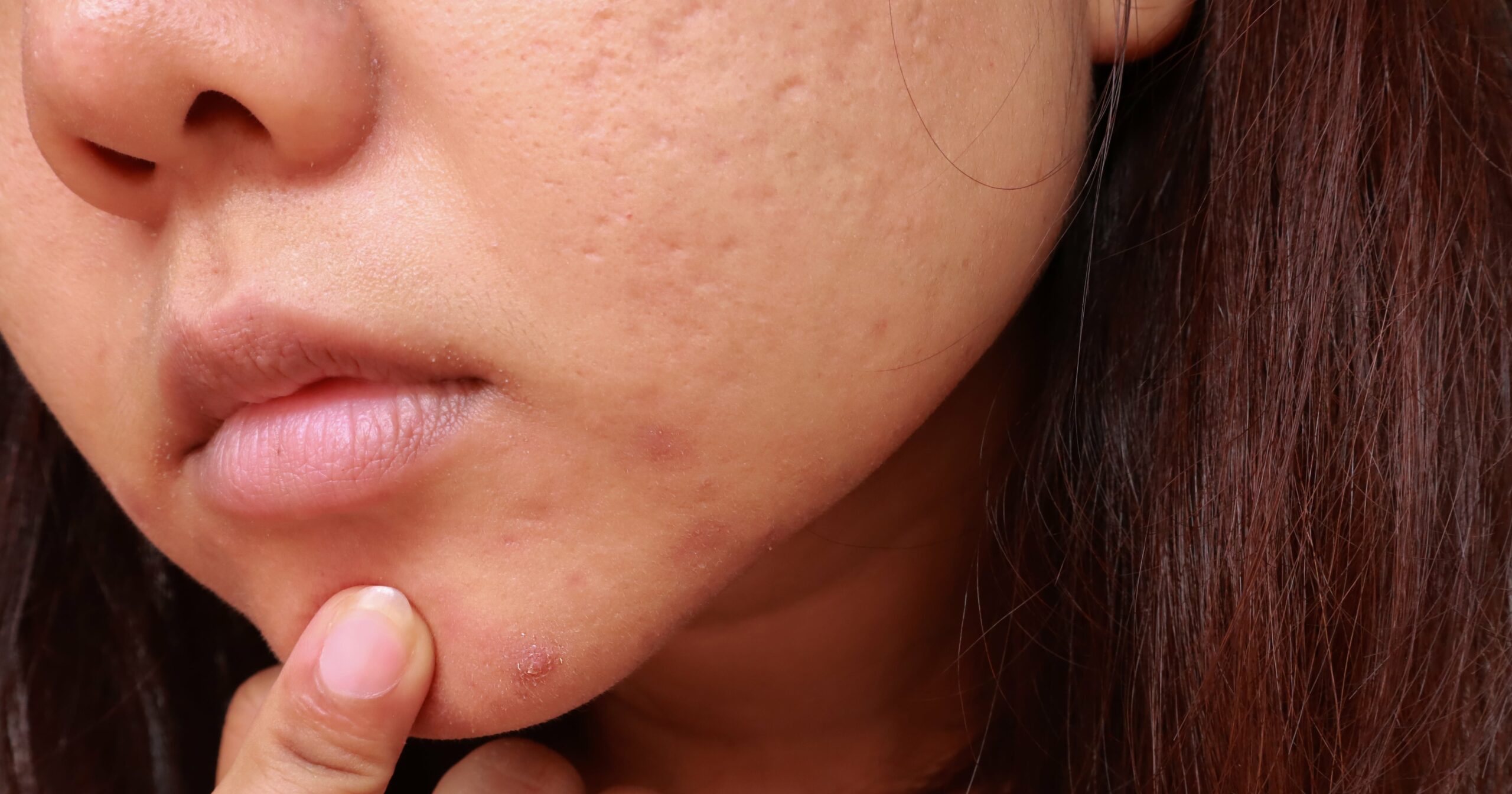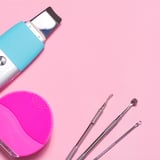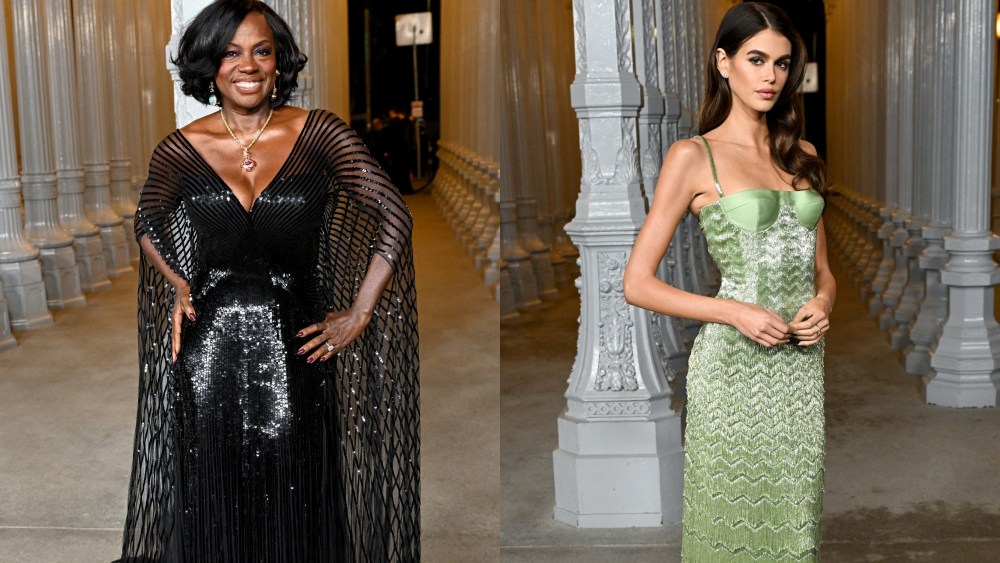Image Source: Getty / Yuuurin
Flatter than a pimple and not remotely as pleasing to pop, blackheads are a common facial scourge that seem to plague even the most meticulously cared for complexions (as you may have discovered if you’ve woken up with one on your face). Some research suggests that blackheads, which are a type of acne, affect nearly everyone at some point in life. Heck, even celebrities with all the skin-care perks in the world get them.
So if your face is filled with little black dots, you’re in fine company. But if you’d rather not be part of the club, read on for expert advice on how to get rid of blackheads.
What Are Blackheads?
“Blackheads occur when the baby hair follicles on your face, neck, chest, and back, typically, fill up with the waxy skin oil known as sebum, dead cells, and P. acnes bacteria,” says board-certified cosmetic dermatologist and Mohs surgeon Dendy Engelman, MD. “When the hair follicle gets blocked, it forms a keratin plug known as a comedone,” says board-certified dermatologist Tracy Evans, MD, director of Pacific Skin and Cosmetic Dermatology in San Francisco. (Fun fact: a single bump is called a comedo, while multiple bumps are called comedones.)
Blackheads fall pretty low on the acne spectrum (yes, there is one) in terms of severity when compared to cysts, but they are a form of acne nonetheless, says board-certified dermatologist Naana Boakye, MD, and should be treated as such (more on that in a bit). Whereas a whitehead is considered a closed comedone because it has skin covering it, a blackhead is what’s known as an open comedone. In fact, the exposure to air is what makes the junk trapped inside oxidize and turn black.
How to Treat Blackheads
Whether you’ve ever googled: “how to get rid of blackheads on nose” or you’re simply looking to get rid of them on the rest of the face, you should be aware that there are two stages to the process, explains Dr. Boakye: blackhead treatment and maintenance. The treatment portion is often most successful when executed chemically with a prescription Retinoid, such as Retin-A, or an over-the-counter option like Differin Acne Treatment Gel ($13, originally $18), which will loosen up the trapped gunk so that it can get exfoliated by the medication. “I love Retinoids because they’re not just helpful for acne, they also address fine lines and pigmentation issues,” Dr. Boakye says. “But they are a journey. It takes a good six months sometimes to see results, but stick it out.”
Other products to treat blackheads include acids, which are well-known to help address the causes of acne. “I like to use salicylic and glycolic acid a lot. They’re both amazing ingredients, and they help to keep your pores clean,” Crystal Koro, a celebrity esthetician and founder of Crystal Clear Skin & Beauty in LA, previously told PS. “Keep in mind, you have to remove that dead skin so that your serums and your moisturizers can actually penetrate through versus just sitting on top of a bed of dead skin,” Koro says. Some of her favorite products to get rid of blackheads include the Dr. Dennis Gross Skincare Alpha Beta Universal Daily Peel ($92), the Sanitas Skincare Brightening Peel Pads ($74), and the SkinBetter AlphaRet Exfoliating Peel Pads ($120).
“Acne is chronic,” says Dr. Boakye. “So after you’ve successfully treated your blackheads, you’ll want to continue to maintain what you’ve achieved.” This is the second step in your treatment regimen.
For the maintenance part of your routine, Dr. Boakye recommends focusing on barrier protection to bolster the overall health of your skin. This can be achieved by using a gentle cleanser daily and following with an oil-free moisturizer like CeraVe Daily Moisturizing Lotion ($12). Dr. Engelman also likes introducing an exfoliating peel into the picture once a month for maintenance to de-gunk and reduce the visibility of pores.
And always, always use oil-free sunscreen, such as MD Solar Sciences Mineral Moisture Defense SPF 50 ($43), during the day, whether you’re treating or maintaining.
Should You Extract Your Blackheads?
Going to town on your blackheads with dirty fingers is not advised – “It can lead to infection or new breakouts,” Dr. Engelman says. But there are ways to get rid of blackheads at home. (TL;DR: skip the extraction tool and turn to cotton rounds to help you squeeze out debris, making sure to keep the area clean before and after.) An aesthetician or dermatologist can also do the deed so that you don’t injure your skin, putting you at risk for postinflammatory hyperpigmentation or erythema (redness).
– Additional reporting by Ariel Baker and Jessica Harrington
Didi Gluck is a PS contributor.
Ariel Baker is the assistant editor for PS Beauty. Her areas of expertise include celebrity news, beauty trends, and product reviews. She has additional bylines with Essence and Forbes Vetted.
Jessica Harrington Jessica Harrington is the senior beauty editor at PS, where she writes about hair, makeup, skin care, piercings, tattoos, and more. As a New York City-based writer and editor with a degree in journalism and over eight years of industry experience, she loves to interview industry experts, keep up with the latest trends, and test new products.




